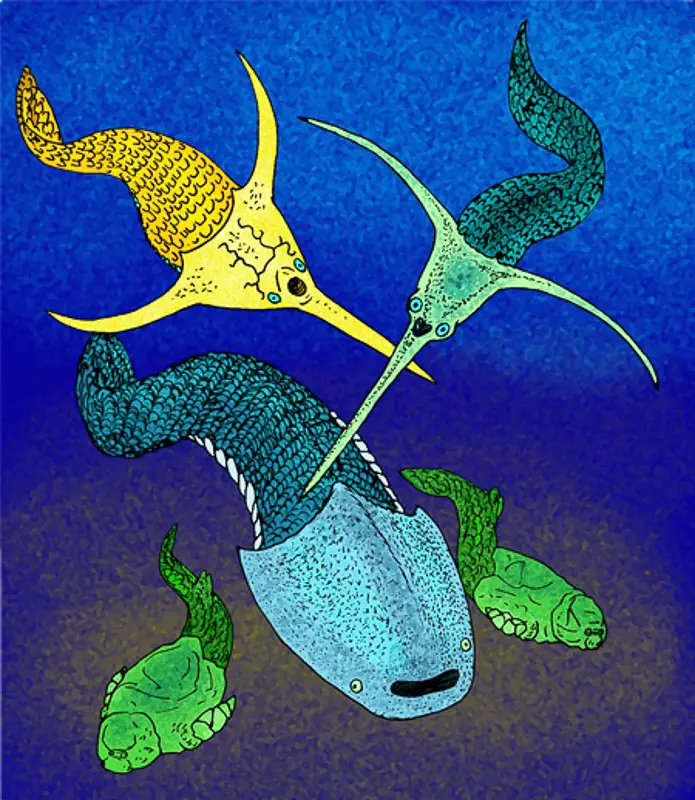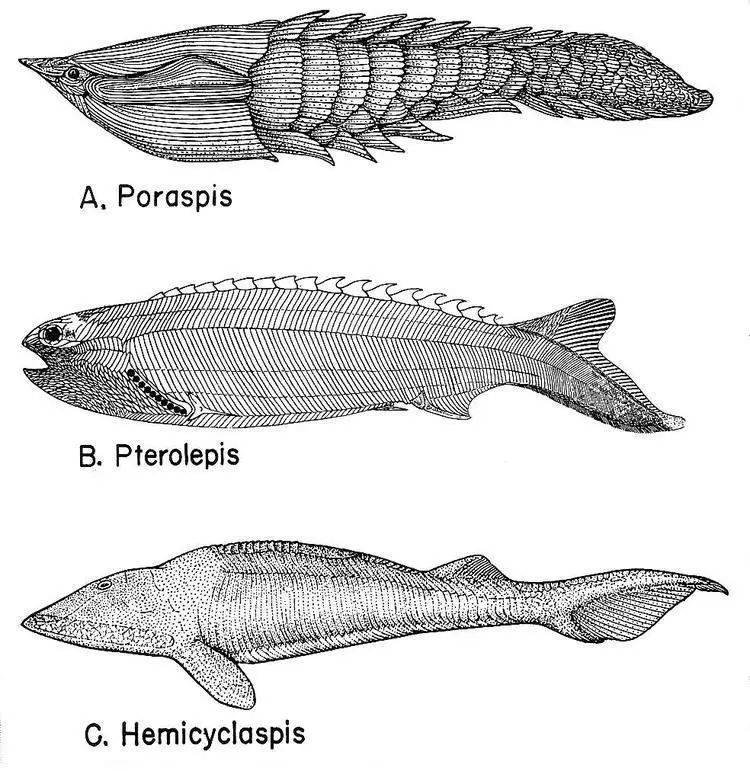Biological Significance of Class Ostracodermi:
- Ostracodermi was the most primitive fossil evidence of Vertebrata, before Ostracodermi there was also several Vertebrate on our earth but we have no fossil. Only Ostracoderms fossil give us the idea about the primitive Vertebrate, Ostracoderms help us to understand how invertebrates evolved into Vertebrate.
- We find the Ostracoderm fossil in the rock of Cambrian period of around 500 million years ago, so we can estimate a timeframe about the Vertebrate and their origin on earth.
- Study of the fossil evidence available of Ostracoderm show that Ostracoderms was much closer to the present day Vertebrate in different aspects. The anatomy of Ostracoderm show much similarity with the advanced Vertebrate so it is clear that they evolved during a large range of timeframe and finally they become extinct but they left their fossil as their replica.
- Before Ostracoderms there are no fossil evidence for Vertebrate so we can assume that the ancestral Vertebrate before Ostracoderms was freshwater habitant and their body was soft so there are no fossil evidence present today.
- The heavy armoured body in Ostracoderms was possibly due to the presence of predator arthropods Eurypterids. But when with time those arthropods started to disappear the need of armoured shield also become less so they evolved into non armoured fish like Cyclostomata.
- The main difference between bony and cartilaginous fishes is composition of skeletal tissue, bone or cartilage. Previously cartilaginous fishes was considered as primitive as compared to bony fishes but as we can see in Ostracoderms the bone is more primitive as compared to cartilage.

Affinities Between Different Groups of Ostracoderm:
- If we study all the available fossil evidence of Ostracoderm then it will be clear to us that they show much dissimilarity in different characters to each other. The difference in them are so much that we can divide them into some distinct groups.
- Based on the most striking feature among different Ostracoderms fossil we can divide Ostracoderms into two groups, cephalaspids and pteraspids.
- The common features in the two groups of Ostracoderm fossil, pteraspids and cephalaspids are the absence of jaw and the presence of large shield like cephalic scale.
- But most of the workers also find much dissimilarity in the two groups, Myxinoids evolved from Pteraspids and on other side Cephalaspids give rise to lamprey.
- If we study carefully about the tail in different groups of Ostracoderm fossil then we do not show much similarity.
- Most of the workers believe that the ancestral Vertebrate must have diphycercal tail which gives rise to pteraspids with hypocercal tail and cephalaspids with heterocercal tail.
- It is clear that Ostracoderms give rise to Cyclostomata and Gnathostomata but the specific group which gives rise to Gnathostomata is not clear yet.

The similarity of Ostracoderm with Cyclostomata:
- Cyclostomata do not have jaw bordered mouth opening and teeth like Ostracoderms so both are placed under Group Agatha.
- Development of central Nervous System and cranial nerve in Ostracoderms show great similarity with Cyclostomata.
- Among the sense organs the auditory apparatus in Ostracoderms show much similarity with the auditory capsule of Cyclostomata.
- The unpaired external nostrils are common in Cyclostomata and Ostracoderms.
From the above similar most of the workers believe that Cyclostomata must evolve from the Ostracoderm, the bony armor become vanished when the predator Arthropods disappeared and the bony armor fewer Ostracoderms gradually evolved into the present-day Cyclostomata.

But how the Ostracoderm becomes extinct is not yet known to us but some workers believe that some animals must come during their time with which they were unable to complete and finally become extinct. But they were the ancestors of the present-day bony and cartilaginous fishes, Placodermi also evolved from the Ostracoderm ancestors.
Reference Ostracodermi Characteristics Classification Timeframes
Detailed Study On
Ostracodermi and its important Feature
Classification of Class Ostracodermi
Phylogeny of Subphylum Vertebrata
An Overview of Classification in Subphylum Vertebrata
Subphylum Vertebrata and its Diversity
Cephalochordata Characteristics Features Classification Examples and Diagram
Urochordata Classification Morphology Characteristic Features
Characteristics Features of Hemichordata
General Comparison of Hemichordata Urochordata and Cephalochordata
Comparative Study of Digestive System in Hemichordata Cephaochordata and Urochordata
Hi Everyone!!! Welcome to Imaluop. Imaluop always try to learn some new and he want to share to other people. Here we will try to learn various topics on Science, specially on Biological Sciences.